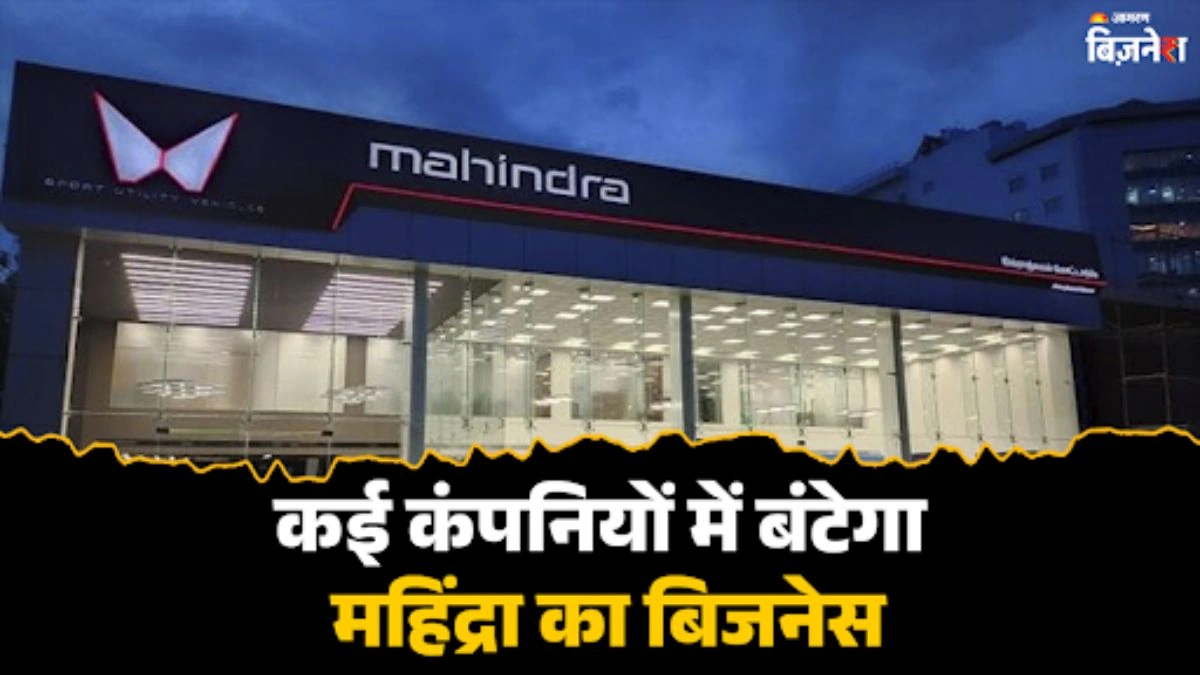Mahindra & Mahindra Demerger | Following Tata Motors? Auto Giant Denies Plans
The buzz around potential Mahindra & Mahindra demerger plans has been swirling for a while, especially with the successful example of Tata Motors . But, hold on – before you start picturing a radical restructuring, let’s get one thing straight: M&M has officially denied any such plans. Or have they? Let’s dive deep into what’s really going on. I initially thought this was straightforward reporting, but the implications are far more interesting.
The Analyst’s Take | Why a Demerger Makes (or Doesn’t Make) Sense

Here’s the thing: a demerger is a big deal. It’s not just about shuffling assets around; it’s about unlocking value. Think of it like this – imagine a company with a wildly successful division hidden within a larger, less profitable whole. A demerger allows that star performer to shine independently, attracting investors who are specifically interested in its growth potential. Consider a company like Reliance Industries. A strategic restructuring can unlock the value that is masked by the sheer size and diversity of the parent company. This is where the talk surrounding a potential demerger at Mahindra & Mahindra comes from.
But, and this is a big but, a demerger also comes with its own set of challenges. It can be expensive, time-consuming, and create uncertainty in the market. Plus, there’s always the risk that the newly independent entities might not perform as well as they did under the umbrella of the parent company. What fascinates me is how companies weigh these pros and cons – it’s a high-stakes game of financial chess.
So, why the speculation around M&M? Well, the company has a diverse portfolio, ranging from automobiles and farm equipment to financial services and hospitality. Some analysts believe that separating these businesses could unlock significant value, allowing each entity to focus on its core competencies and attract specialized investors. This strategy is often seen in other major automotive companies worldwide.
M&M’s Official Stance | A Firm Denial
Okay, let’s address the elephant in the room: M&M has explicitly denied any immediate plans for a demerger. According to recent statements from top executives, the company believes that its current structure is optimal for achieving its strategic goals. They argue that the synergies between its various businesses are valuable and that a demerger would disrupt these synergies. They also have to consider other factors such as market volatility and investor confidence.
Now, let me rephrase that for clarity: While they’ve denied immediate plans, the door isn’t necessarily slammed shut forever. Companies’ strategies evolve, and what might not make sense today could become a viable option tomorrow. The automotive landscape is shifting rapidly, with the rise of electric vehicles and new mobility solutions, so M&M might need to reassess its structure in the future. This is a fluid environment.
Following Tata Motors? The Comparison and Contrast
The Tata Motors example is often cited in discussions about potential demergers in the Indian auto industry. Tata Motors successfully separated its passenger vehicle business from its commercial vehicle business, creating two distinct entities with their own strategic focus. This move was widely praised by investors and analysts, who believed that it would unlock value and improve the performance of both businesses. However, the comparison between Tata Motors and Mahindra & Mahindra isn’t perfect.
Tata Motors was facing significant challenges in its passenger vehicle business before the demerger, while M&M’s automotive business is generally considered to be in a stronger position. Also, their overall corporate structures and portfolios are vastly different. So, while the Tata Motors example provides a useful case study, it’s important to recognize that each company’s situation is unique.
Future Growth and Diversification Strategy
M&M’s current strategy focuses on organic growth and strategic acquisitions, rather than a radical restructuring like a demerger. The company is investing heavily in new product development, expanding its global footprint, and exploring new business opportunities in areas such as electric vehicles and renewable energy. These strategic investments aim to secure a strong competitive position and achieve long-term sustainable growth. You can learn more about their long-term vision on sites like Wikipedia .
The company also appears to be focusing on strategic partnerships and collaborations to enhance its capabilities and access new markets. This approach allows M&M to leverage external expertise and resources without undergoing a disruptive demerger. For example, its partnerships in the electric vehicle space allow it to bring technology faster to market.
Investment Implications and Market Response
For investors, the key takeaway is that while a demerger of Mahindra & Mahindra isn’t on the cards right now, the company’s strategic direction and growth prospects remain compelling. M&M’s strong market position, diverse portfolio, and commitment to innovation make it an attractive investment for those seeking long-term value creation. Investors should keep a close watch on the company’s performance in its core businesses, as well as its progress in new areas such as electric vehicles. Also, don’t overlook key government policy changes that can affect the auto sector.
Also, remember that market sentiment can be fickle. News cycles change rapidly, and investor perceptions can shift quickly based on the latest headlines and analyst reports. Savvy investors need to look beyond the short-term noise and focus on the underlying fundamentals of the company and its long-term potential.
Ultimately, the question of whether M&M will eventually consider a demerger remains open. But, for now, the company is focused on executing its current strategy and delivering value to shareholders through organic growth and strategic initiatives. And if you are looking for holidays related stock market, you can find more information here NSE Holidays .
The company is actively pursuing a path of diversification and innovation in the automotive sector , with significant investments in electric vehicles and sustainable technologies. While there might be no talk of a demerger currently, this strategic focus aims to unlock value and drive long-term growth for investors.
So, what’s the real story? Mahindra & Mahindra is charting its own course, one that emphasizes organic growth, strategic partnerships, and a commitment to innovation. It’s a path that may not involve a demerger, but one that could still lead to significant value creation for investors and stakeholders.
If you’re interested in the stock market you can find the current prices here NSDL Share Price .
FAQ
Frequently Asked Questions (FAQ)
Will Mahindra & Mahindra consider a demerger in the future?
While there are no immediate plans for a demerger, the possibility remains open depending on market conditions and strategic needs.
What are the potential benefits of a demerger?
A demerger could unlock value by allowing individual business units to focus on their core strengths and attract specialized investors. The successful example of Tata Motors further fuels discussion regarding the advantages of demerging.
What is Mahindra & Mahindra’s current strategy?
The current strategy focuses on organic growth, strategic acquisitions, and investments in new technologies such as electric vehicles and sustainable technologies .
How does Mahindra & Mahindra compare to Tata Motors?
While both companies are major players in the Indian auto industry, their business structures and strategic priorities differ significantly. Direct comparisons regarding a potential demerger may not be applicable.
What should investors do?
Investors should focus on the company’s long-term growth prospects, monitor its performance in key business segments, and assess its strategic initiatives.
What are the key factors influencing M&M’s strategic decisions?
Key factors include market dynamics, regulatory changes, technological advancements, and shareholder value considerations. The automotive market is very competitive.













